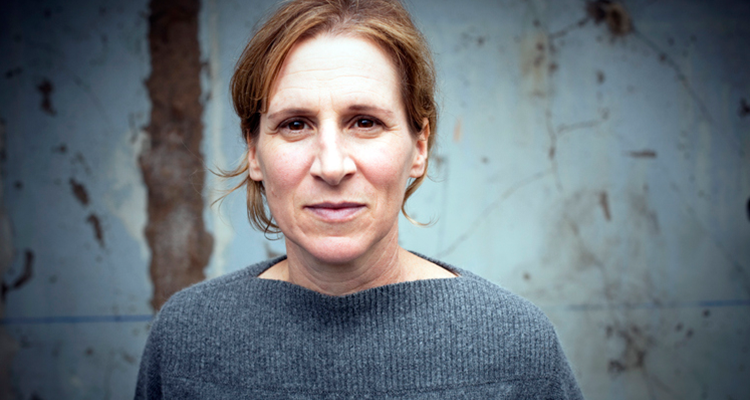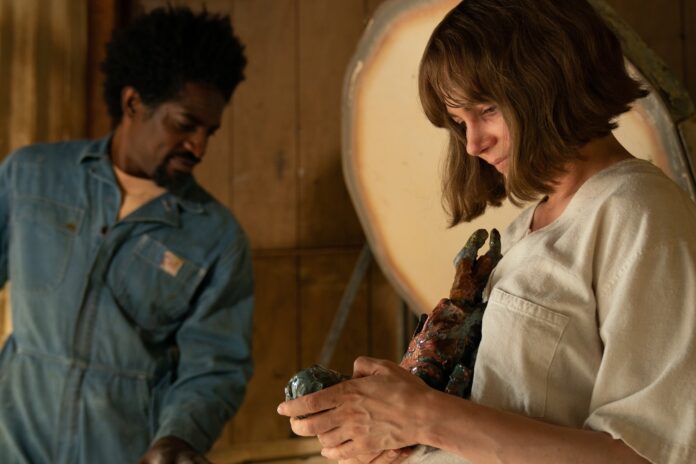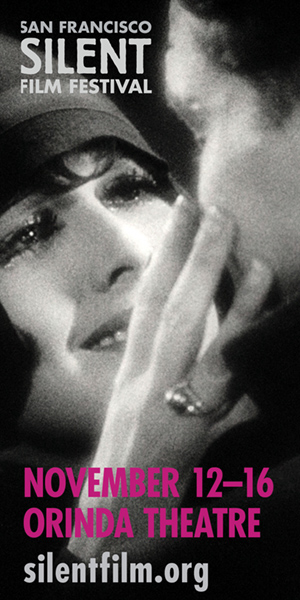If not for COVID, Kelly Reichardt’s (Wendy and Lucy, First Cow) latest character-driven drama Showing Up might look a lot different. In 2019, the Oregon College of Art and Craft in Portland shuttered after 112 years, its campus sold off and slated to expand a middle school. But then 2020 shut down the world, delaying the school’s plans long enough so that Reichardt was able to secure the location, casting it in the role of the art school it once was.
“The school itself became kind of a living thing,” Reichardt says during a recent visit to Berkeley, where BAMPFA held a retrospective of her work, including two sold-out preview screenings of Showing Up.
“People had to generate all the work for the film and the young actors had learn to do all this stuff, learn how to work looms and do clay out of the wheel. Everybody was making stuff and the school was getting filled up with it and everyone was teaching each other how to do things.
“It was really fantastic. Even though filmmaking is so different, I got to wade into this other, different world that’s more direct and really tactile.”
The film reunites the filmmaker with Michelle Williams for their fourth collaboration and the first since 2016’s Certain Women. Williams plays Lizzy, by day a worker bee in administration at the art college, where her mother Jean (Maryann Plunkett) is her boss. After hours, Lizzy is all about her art, sculpting small figures of women.
Lizzy is preparing for a show at a local gallery but facing distraction after distraction. Her friend and landlord Jo (Hong Chau), herself busy preparing for a show of her large-scale yarn sculptures, poses one by delaying calling in a repairman to fix Lizzy’s water heater. Her ceramicist father Bill (Judd Hirsch) and her brother Sean (John Magaro) worry her with their behavior.
She has also become a caretaker for a wounded bird, which seems like a microcosm of her life. Lizzy is so busy taking care of others she scarcely allows time for herself. She is also so introverted that even when she is within her own community she somehow seems outside of it.
“In the beginning, when (co-writer Jon Raymond) and I were writing and studying to many female sculptors and artists, you can really go in a different direction every day,” Reichardt says. “Jon and I were talking about the different parts of all the people we know. I went to art school and he’s written about artists for a long time. There’s this morphing period where the character can become anything and then you have to start settling down into who she is.
Help us save local journalism!
Every tax-deductible donation helps us grow to cover the issues that mean the most to our community. Become a 48 Hills Hero and support the only daily progressive news source in the Bay Area.
“I think the first thing I sent Michelle was an image of Lee Bontecou sculpting. That was a great bridge for me to being able to see Michelle in the part. They look so much alike. It sounds too fundamental but it was helpful. And Michelle was working with an individual artist, not studying her personality but learning her craft and her art. The art is so personal. There is no way of being in the studio and working with her and not be absorbing something of how she works. You can even see Michelle kind of taking on the postures and gestures of the actual sculptor.
“Then there’s how Lizzie is with her family and her job… It really is a process every time of finding the characters because some of it is just out of everyone’s hands and that has to do with when everyone starts working together. It’s a living thing that’s happening.”

Showing Up didn’t begin as a film about an everyday modern artist at all. Reichardt and Raymond originally envisioned a biopic of Emily Carr, thinking that the early 20th-century artist had fallen into obscurity. But a research trip to British Columbia, where they discovered that Carr is so revered there are statues of her and even a Vancouver art school named for her, convinced them that she was too famous for the picture they had in mind.
Instead, Reichardt and Raymond turned their gaze not to any particular artist or of artists that are so successful that they can make a living solely from their art, but to those people for whom making art is as necessary as breathing regardless of the circumstances of their lives.
“We became interested in showing the artist’s life, not as the end result of anything but the process of working every day,” Reichardt says. “Maybe it’s a local show you have or and maybe your audience doesn’t really grow, maybe you show to the same people all the time, whatever it is. But you’re compelled to, every day, get to your studio or your place that you work and put in the hours and it becomes a fundamental part of life and, and creates community and allows for gatherings and critical thinking and just a way to kind of absorb the world and for all the reasons that people make art.
She adds, “It is the enviable people that go into their studios or garages and get to put their hands in things, whatever it is and see the result somewhat quickly, something very far away from how filmmaking goes.”
Showing Up opens at Bay Area theaters on Friday, Apr. 14.





